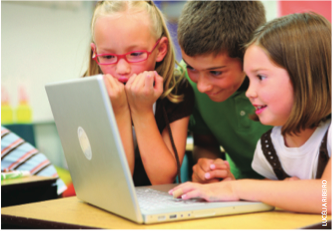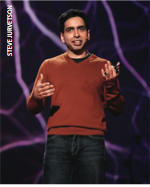MONDAY, 13 OCTOBER 2014
If I were to ask you what the most popular category of videos on YouTube is, you might guess something to do with cats or other fluffy animals. While you would have been correct in the past, a new trend has arisen on the website – educational videos, particularly those involving mathematics and science. With over double the number of weekly views compared to videos uploaded to the pets and animals category, the behemoth video platform is now being used for much more than the occasional chuckle.In stark contrast to the venerable giants of science communication from the past–greats such as Richard Feynman or Carl Sagan–the new generation of educators is young, hip and surprisingly adept at condensing complex scientific concepts into bite-sized, entertaining portions. Embracing a wide variety of formats, from the more traditional talking heads to stick figures drawn with markers filmed in stop-motion, these YouTubers are making science interesting and tangible for anyone with access to an Internet connection. Even more, what they are doing is incredibly popular, with some of the largest channels averaging several million views a week.
It might be easy to discard this phenomenon and its effect on the traditional science education model by assuming that its popularity is derived from the dumbing down of its scientific content to make it palatable for the average person. Choosing specific, popular science ideas that make for entertaining videos may have little use in the real pursuit of scientific knowledge or discovery after all. But you only have to look as far as channels such as ‘Minute Physics’ by Henry Reich, a former physics masters student, or ‘Crash Course Chemistry’ by Hank Green (his brother, John Green, also hosts a channel called ‘Crash Course History’) to see that content focused directly at the high school syllabus can still be wildly popular.
The impact on educational practices cannot be understated–YouTube and other online video content offers virtually limitless, up-to-date information for students and will challenge some core assumptions about how students should learn mathematics and science. In addition to YouTube, other organisations such as the Khan Academy host vast online repositories of video lectures and interactive exercises numbering in the thousands over a wide variety of subjects, all of which are free to access for students, staff and parents.
The availability of online materials, as well as the ability for teachers to easily upload their lectures, has even led to a revolutionary educational concept known as the ‘Flipped Classroom’, a concept that was arguably pioneered by Harvard physics professor Eric Mazur in the early 1990s. The idea is for teachers to set homework that involves students watching a number of short lectures online and then to work with students through activities related to the lectures during the school day, under their supervision. This switching of the normal cycle of information delivery during the school day and revision after school, allows students to work through the lecture material at their own pace and then to make use of the teacher’s advice when trying to apply the new knowledge to a problem. This approach has been implemented in a number of schools, most notably at Clintondale High School in Michigan. In 2010, Clintondale was rated among the worst 5 per cent of schools in the state with ninth grade mathematics and science failure rates of 44 per cent and 41 per cent, respectively. In one year, after introducing a new paradigm focused on the Flipped Classroom, these same failure rates dropped dramatically to 13 per cent and 19 per cent, respectively. Such improvements would be impossible without the free and easy access to online video tutorials.
Online educational content also has a much wider reach than just the classroom. According to Mitchell Moffit and Gregory Brown, creators of the YouTube channel AsapSCIENCE, their average viewer is a 35-year-old male. Their channel covers topics ranging from the outcome of sleep deprivation to the science of hangovers, via cartoons on a whiteboard. These videos are therefore not solely the domain of high school students trying to pass their exams, nor do they only attract viewers of the same mid-20s demographic of many of the channels’ hosts and creators. The instigators of this new wave are able to captivate audiences who would be otherwise uninterested in the subject matter with short, witty videos that entertain and educate in a way no other form can. This can only help improve the overall scientific literacy of society, something that is sorely needed given the increasingly scientifically- complex problems the world faces.
Richard Feynman is regarded as one of the best lecturers of all time, but he was still only one man with a limited reach. What would he have made of the technology we have at our keyboards today? Perhaps the most disruptive effect of online video is the ease with which one person, given time and the right idea and presentation, can influence millions. Take the example of Salman Khan, who started his YouTube channel in 2006 uploading videos of himself giving tutorials in mathematics so as to meet the demands of his friends and family who wanted his help. Following the popularity of his videos amongst students and teachers, he quit his job as a financial analyst to found the Khan Academy, whose online lectures and exercises are now used by millions of students all around the world. Khan is a talented lecturer, and had the foresight to record his lessons, but it really was made possible through the transformative technology he had available to him.
Despite the promise of this Brave New World of learning, there is still a major caveat. Internet access at home is far from assured, especially in developing countries, and can contribute to a digital divide between students who can access content at their own pace in the privacy of their own rooms (a factor that Khan himself explicitly mentions as one of the key benefits of his form of lecturing) and those who cannot. With better access for lower income households this disparity might be able to be overcome, but that is currently a far way off. We must be careful not to allow this revolution to become another source of inequality.
Despite this, it is a fantastic time to be an educator, and especially a science communicator. Never before have passionate and talented scientists, especially younger scientists, been able to follow their interests with such freedom. Furthermore, through programmes such as the YouTube partnership scheme, this passion can turn into a viable and even lucrative career. Even better, we all get to enjoy their creativity, learn from their wisdom and laugh along with them, without spending a single pound.
Matthew Dunstan is a 3rd year PhD student in the Department of Chemistry.




